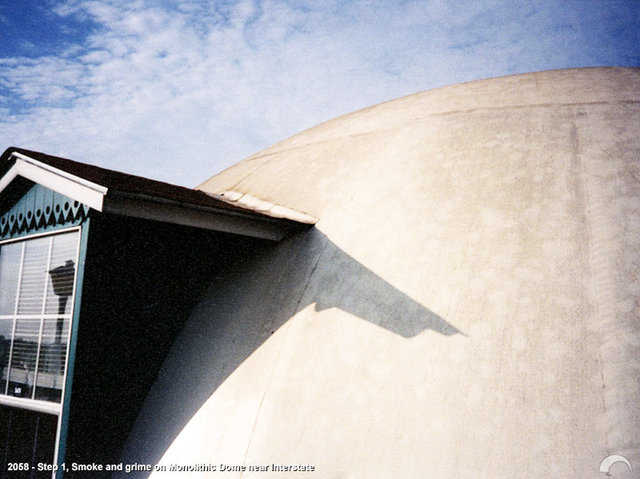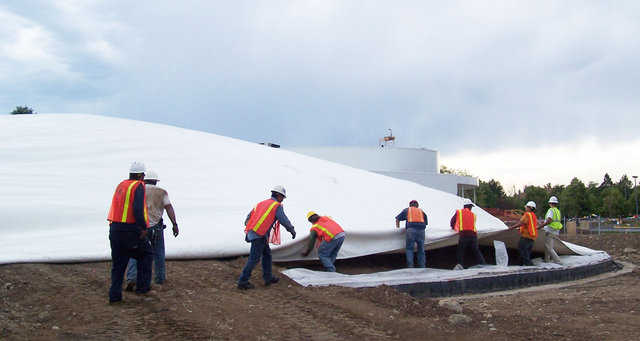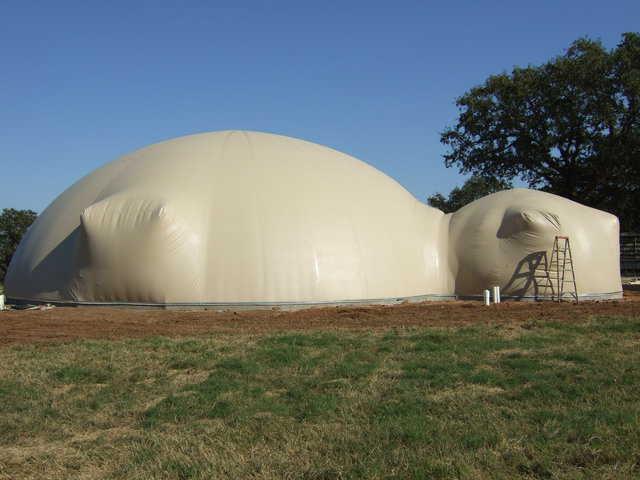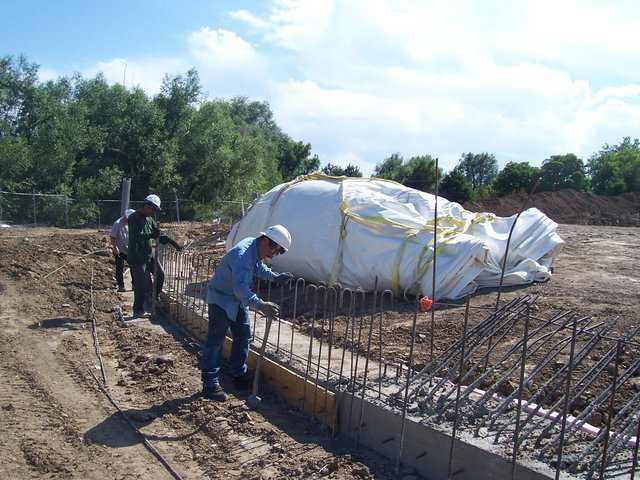Airform – How To’s….
How to articles about Monolithic Airforms.
How to articles about Monolithic Airforms.

At times it is appropriate to clean the Airform, before or after the building is completed. This may be necessary because of dirt accumulated during shipping or construction, or from our not-so-clean environment.

An Airform is a highly engineered fabric structure. Because of its expense, extreme care should be taken not to damage it. The most likely time to damage the Airform is while transporting it to the job site; spreading it; attaching it; and inflating it.
Blistering on a Monolithic Dome is usually minimal because of the materials used. Nevertheless, at times blisters will occur. Each time the sun gets hot on that same spot, it increases the size of the blister as the vapors expand.

When constructing a Monolithic Dome, proper inflation of the Airform and continual regulation of air pressure are as important as clean foam and Shotcrete application.

The Airform is a highly engineered fabric structure that should be handled with great care. Many factors enter into its attachment to the concrete foundation.

When dealing with something as “delicate” as an Airform (Airforms are as tough as a boot but because of their weight they seem delicate), rips and holes will happen. The best way to deal with these problems is to be prepared for them. This article reviews a few of the things you can do to fix such problems.

So after all the back-slapping, hand-shaking and fan fair during the Airform inflation, you’re finally ready to get down to the business of interior construction. From inside, you’re admiring the eye-catching, organic shape of the inflated Airform and the ethereal translucence as the sunlight filters through fabric, when a contractor derails your train of thought.

When designing your dome for residential or commercial use, it’s worth thinking through multiple construction possibilities early in your planning. Floor plans and fixtures might take up the bulk of your time, but an often overlooked issue is the dressing out of your exterior windows.

As my wife and I prepare for future exterior work on our Monolithic Dome, and to keep up with recommended Airform maintenance, it’s finally time to wash our Airform again.